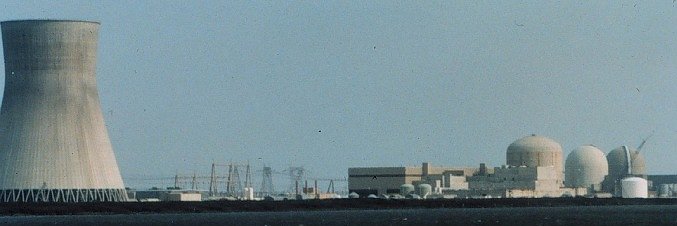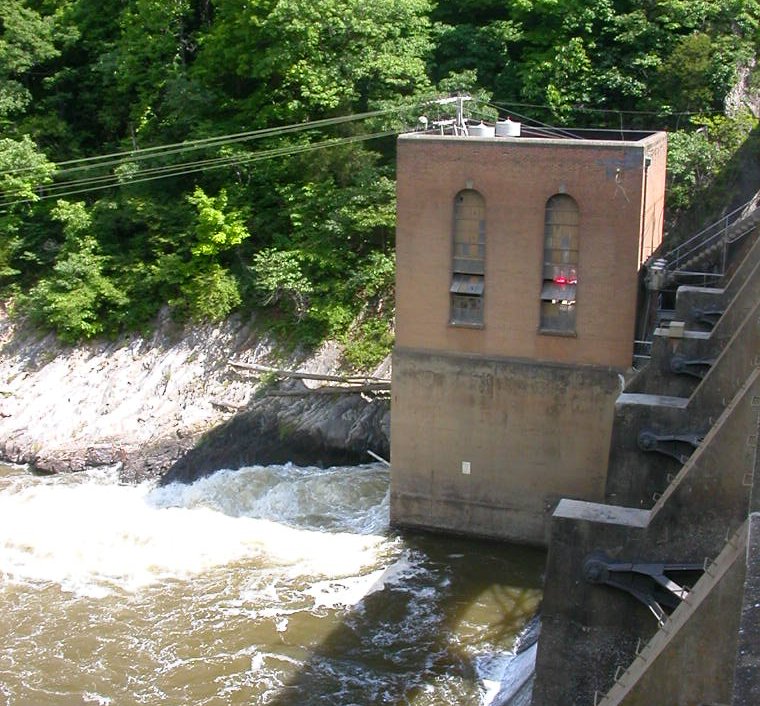How Virginia Might Have Developed, If Thomas Edison's Direct Current Distribution System Had Been Adopted
A "What If" Scenario: if Thomas Edison had won his business contest with George Westinghouse a century ago, electricity would be available only within a few miles of a power plant. That would have impacted where manufacturing factories were built and where Virginia's population would have been concentrated.
George Westinghouse and Thomas Edison designed competing transmission systems for using alternating current (AC) vs. direct current (DC). The physics of electricity, as documented by Nicholas Tesla, favored Westinghouse's system for transmitting AC at high voltage. Edison's DC alternative would have required building generating stations every 5 or so miles, while AC at high voltage can be transmitted for hundreds of miles with less than 10% of the power lost to resistance in the wires.

the grid transfers electricity from sites where it is generated to sites where electricity is used, but individual electrons travel only a short distance and switch directions 60 times/second
Source: US Department of Energy, Top 9 Things You Didn't Know About America's Power Grid
George Westinghouse won the contest. Virginia and the rest of the United States ended up with massive power plants that take advantage of the economies of scale to generate electricity. Wires transmit the electricity from centralized power plants to decentralized customers. To avoid the excessive costs of builsing multiple networks of transmission wires, state agencies have granted specific utilities a monopoly to distribute electricity within defined geographic areas.
Those few, large power plants generate alternating current. Transformers at substations next to the power plant raise the voltage to as high as 750,000 volts to transmit it long distances, efficiently, to reach customers scattered across Virginia. At substations near customers, transformers step down the voltage for local distribution at 12,000 volts. Not far from the final destination of a house or business, additional transformers reduce voltage again to the 110-volt and 220-volt circuits that are common in households.

large nuclear power plants have cooling towers (on left) and containment buildings for reactors (on right)
Source: NOAA Photo Library
If Edison's technology had been adopted and transmission of electricity was geographically constrained, the pattern of development in Virginia today might be far more centralized. Urban growth might be concentrated at Fall Line cities near waterpower sources, and in linear strips along rail lines bringing coal to power plants.
Virginia's population density would be much greater in a small number of places. Most people would live within 5 miles of a power plant, where it was cost-effective to locate factories that provided jobs. The distinction between rural/urban areas would be sharp, without the sprawling suburbs common today.
Since power plants could serve only local customers, the economies of scale in constructing massive power plants based on coal or nuclear energy would apply only for a few very-densely populated cities. Small communities would get electricity from small power plants, fueled by coal, natural gas, biomass, and wind.
Ridges in Highland County would be covered by turbines, with local distribution to local homes, businesses, and industries. Individual houses more than 5 miles from a power plant would rely upon wind, solar, or geothermal systems, and the unsightly grid of overhead power lines would be limited to urban areas.
Air/water pollution would affect residents living near each coal-fired power plant, altering today's debates about environmental justice. Wind patterns would shape wealthy vs. poor neighborhoods in all urban areas, with locations downwind of power plants being less desirable.
Different power plants would have significantly different costs, based on available fuel. Hydropower facilities with lowest-cost fuel would spur greater economic development, so every potential dam building site would be developed and anadromous fisheries be devastated permanently. Buchanan, Dickenson, and Wise counties on the Appalachian Plateau would have clusters of urban development, near power plants built close to coal mines with factories located nearby.
Utility companies would be small and fragmented, in contrast to market domination today by Dominion and AEP. Communities would compete for economic development by subsidizing the cost of electricity in order to attract jobs - comparable to the way communities compete today by constructing industrial parks with shell buildings, or offer property tax reductions.
Small, modular nuclear power plants would be advertised as the best way for communities with high-cost power sources to compete with areas near waterfalls, natural gas pipelines, or railroads that shipped coal.

City of Radford 1-megawatt hydropower plant at Little River Dam
Electricity Transmission in Virginia
Electricity in Virginia
Virginia Places


